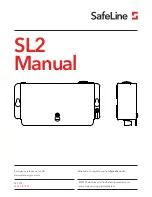
REL Acoustics Britannia Range User Manual
21
Positioning
The optimal position for a REL is in one of the corners behind the main speakers, with the
driver pointed directly out of the corner towards the centre of the room. This position provides
9 dB of mechanical amplification and allows for the most linear true low bass wave launch,
owing to the ability to tune the sub to the axial node of the room, or longest throw distance.
The Process
To begin the set-up process, choose a piece of music that has a repetitive bass line that is
very low in frequency. We recommend cut 4 from the soundtrack to Sneakers (Columbia CK
53146). This has a repetitive bass drum throughout that gives you plenty of time to move the
woofer around, but more importantly, the recording venue was quite large for this recording,
and therefore it has a very deep and large-scale bass signature. This type of cut is perfect for
the set-up process, and should be played at the highest reasonable level expected for system
play back.
Working with a partner, one in the listening position and one at the woofer manipulating the
controls is the most effective and efficient ways to set up the woofer. If working alone, the
initial steps in the set-up can very effectively be carried out from the location of the woofer.
Trying to ignore all other music in the cut, listen for the bass drum and its effect on the
listening room.
1. Phase Orientation: Once in the corner we need to adjust for phase. This may be the
single most critical step, and because it really is quite simple, it is often over thought,
especially by the most experienced audiophiles. Keep in mind; the right phase is
whichever position is the loudest or fullest. While playing music with true low bass,
adjust the crossover to a point where the sub and the speaker are sure to share
frequencies (B, 3 for big speakers or C, 4 for smaller speakers). At this point turn the
gain so that both sub and speaker are roughly equal and then switch, using the
“mode selector” switch, from “0” (position 1) to “180” (position 3) phase positions.
Again, whichever position is loudest or fullest is the correct position, and, as often as
not, may be 180-degree phase. That is, this position is working in harmony with your
main speakers, reinforcing bass, and not cancelling it.
2. Placement: The next step is to determine precisely how far out from the corner the
sub should be placed to achieve the most efficient output, as well as the lowest
frequency extension. With the sub fully into the corner, continuing to play the music,
slowly pull the sub from the corner on the diagonal, equidistant from both side and
rear wall. At a certain point (sometimes a matter of only a few inches, in rare cases a
foot or more) the sub will audibly go lower, play louder, and, if it truly locks on to the
room and is fully pressurising it, the air around the sub will seem to be energised,
stop right there! This is the correct position for the sub.
3. Orientation: Once the position from the corner has been established, the orientation
of the woofer must be determined by rotating the REL from an imagined centre point
at the rear of the sub. As the sub is moved from one side to the other listen for the
greatest level of output and bass linearity. In effect, the sub should left in the position
where it is playing the loudest and lowest.
Crossover and Gain Settings: To determine the crossover point, bring the gain down, put the
crossover to A-1, bring the gain back up to the point where you have achieved a subtle
balance (In some situations where there may not be sufficient output due to room and
subwoofer interactions B-1 should be the position to use in setting initial gain). Working only
with the coarse control (A-D), bring the crossover point up until it is obviously too high, at this
point bring it down to the next lowest setting. Now, working with the fine control (1-6), bring up
the crossover point until it sounds too high, at which point bring it back down to the next
lowest setting. For all intents and purposes, this is the correct crossover point. Once this
stage has been reached, subtle changes to gain and crossover can be accomplished to
provide the last bit of complete and seamless integration. In addition, a repetition of step 3
above, orientation, may provide further, albeit subtle, improvement of the sub-bass system’s
integration with the main speakers. With that, set-up is complete.









































